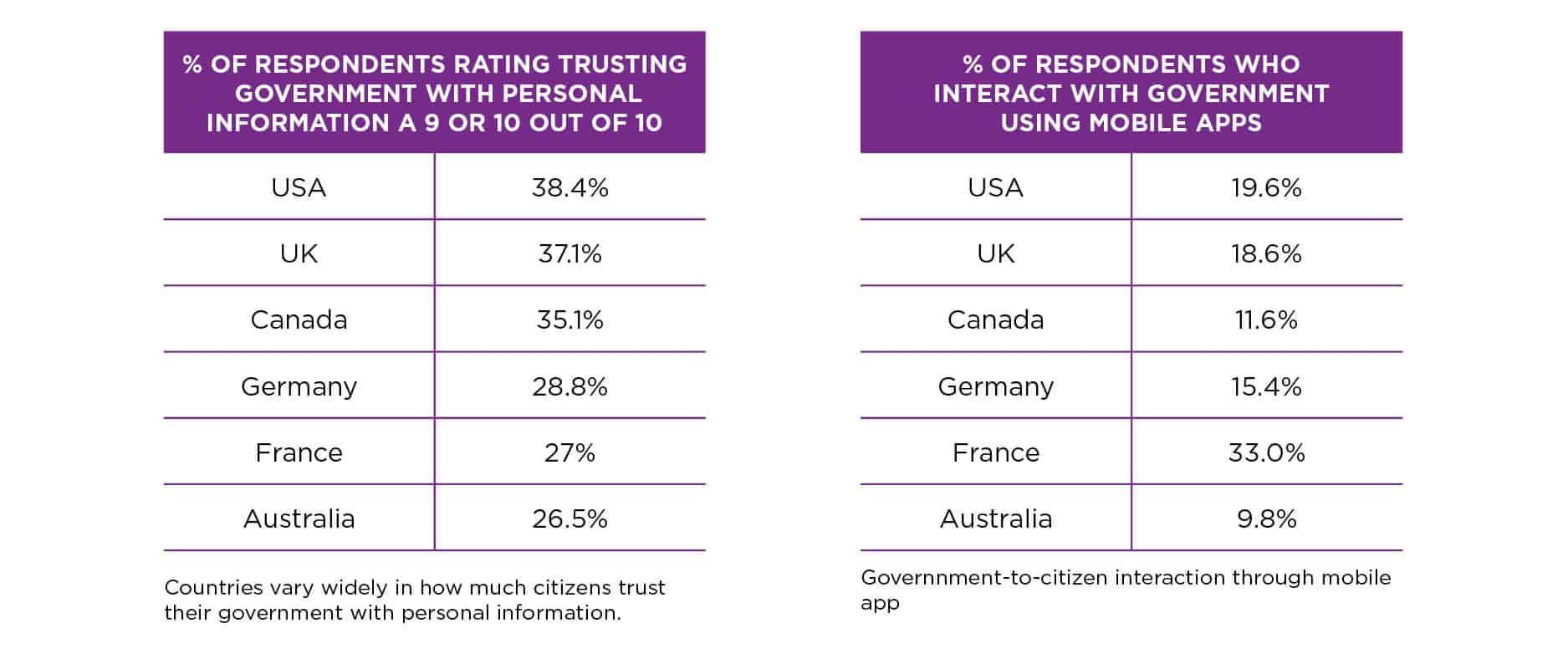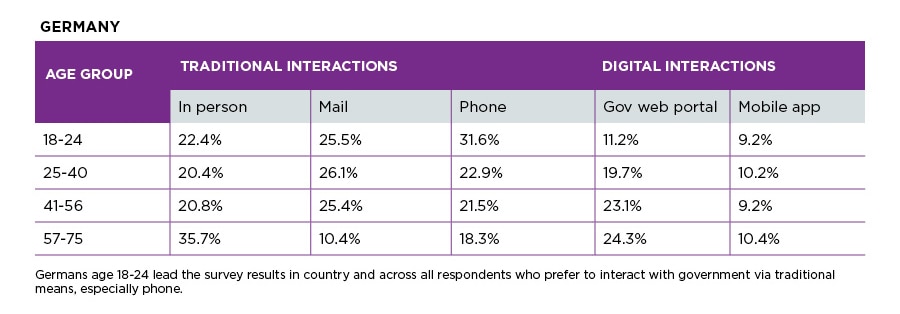A recent Entrust survey revealed that governments around the world are embracing eGov service enablement and delivery to revolutionize their interactions with citizens, but in varying degrees. Here we will explore why governments need to modernize citizen service delivery, and the benefits they will gain by doing so. And we’ll look at how differences in demographics can illuminate ways that governments can enable simple, seamless, and secure interactions with their citizens.
When governments prioritize enhancing digital infrastructure, policies, and processes, they can streamline operations, save time, reduce errors, and lower costs associated with citizen interactions. The result is increased citizen engagement and improved transparency, which promotes trust. The key to keeping that trust is ensuring that personal information is protected – and there’s room for improvement here.
A recent study by Pew Research Center revealed that trust in government remains low among U.S. citizens, finding that one in five Americans say they trust the government in Washington to do what is right “most of the time” (19%), and just 2% trust the government to do what’s right “just about always.”
Across all countries surveyed by Entrust, most respondents put their trust in the government’s ability to secure their personal information somewhere in the middle of a 1-10 scale. There were significant differences, however, in who gave government high marks (9 or 10 on a 1-10 scale) for trust, ranging from a high of 38.4% in the United States to a low of just 26.5% in Australia.
Governments are lagging in their efforts to improve their mobile app delivery in government-to-citizen interactions. As they strive to embrace digital transformation, building and maintaining citizens’ trust is crucial.
Countries vary widely in how much citizens trust their government and how they interact.

Australia Commits to Digital Transformation
The Australian government recognizes the importance of government-to-citizen engagement in the digital age, and, according to Australia’s Digital Transformation Agency’s Digital Transformation Strategy 2018-2025, aspires to be a leading digital government globally. Australia’s strategy sets a target to bring all federal services online by 2025.
Australia now has a double-digit lead in high marks for service delivery via mobile app use over the other countries in the Entrust study. Most other countries rely on web portals as their preferred digital option.

The Australian government is expected to release its final Data and Digital Government Strategy, along with an implementation plan, by the end of 2023. These documents will outline the initiatives for the government’s vision of a digitally empowered nation.
Germany Recognizes the Need for Change
The European Commission’s Digital Economy and Society Index (DESI) in 2022 ranked Germany 13th among European Union member states in terms of digital performance. This ranking highlights the disparity between Germany and its counterparts.
- 50% of Germans possess basic digital skills, compared to 80% of Finns
- Fewer than 40% of German households have access to fixed broadband connections, versus 70% of Spaniards who enjoy that convenience.
With few digital options today, German citizens have the lowest usage of eGov service delivery options across all the countries surveyed.

This is about to change. The German government recognizes the need for comprehensive digital transformation and acknowledges the importance of embracing digital advancements. While Germany does have a strong economy, the country faces challenges such as inconsistent internet connections, outdated technology in classrooms, low citizen trust, and government offices heavily reliant on traditional methods. This lack of digital adoption and integration could adversely affect Germany’s growth in industrial and public sectors.
Different Age Groups See Things Differently, and the Same

The table above shows how different age groups in the study, regardless of geography, prefer to interact with government. There are some interesting similarities and differences:
- Government web portals are the preferred method of interaction across age groups.
- Gen Z preferences are almost evenly split between the web and phone with the use of all other means of interaction (other than mail) preferred over mobile apps.
- Gen Z prefers to use the phone more than baby boomers.
- Baby Boomers prefer web portals 52% more than their Gen Z counterparts.
- Everybody, regardless of age or geography, dislikes mail. The lowest scores in our survey were reserved for in-person interactions, and interactions by mail. While governments will continue to provide these services to meet the needs of all of their citizens, this speaks to the critical need to embrace digital services.
Advice to Governments Everywhere
Embracing digital technologies will help drive simpler, more seamless and secure citizen services, resulting in engaged citizens, streamlined processes, and strengthened trust in government.
Governments should collaborate with technology vendors to provide seamless, secure citizen journeys for eGov service enablement and delivery with the goal of creating a modern and inclusive framework that adapts to the needs of our rapidly evolving digital age.
Entrust enables trusted citizen identities for eGovernment service enablement and delivery. Our solutions let government departments and agencies seamlessly and securely enroll and onboard citizens, issue and verify citizen credentials, and accelerate the delivery of citizen services resulting in:
- Improved citizen experience and engagement
- Better service delivery
- Decreased benefits fraud
- Strengthened borders
- Improved cyber risk posture




